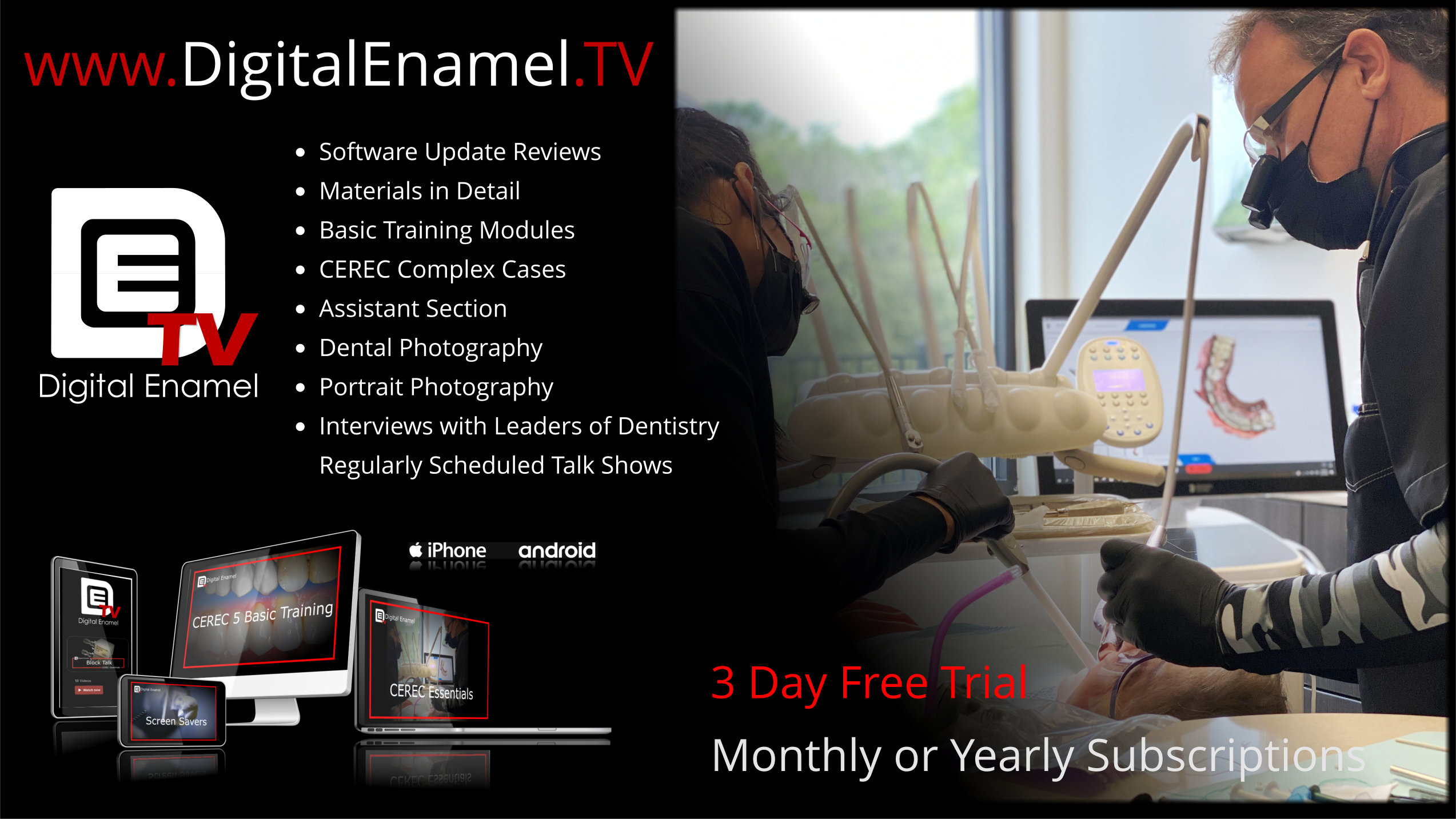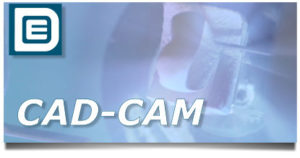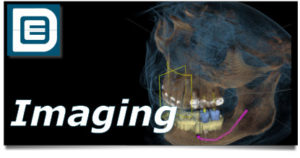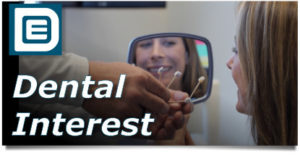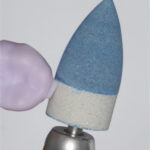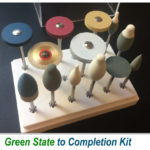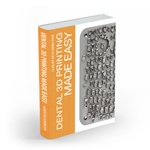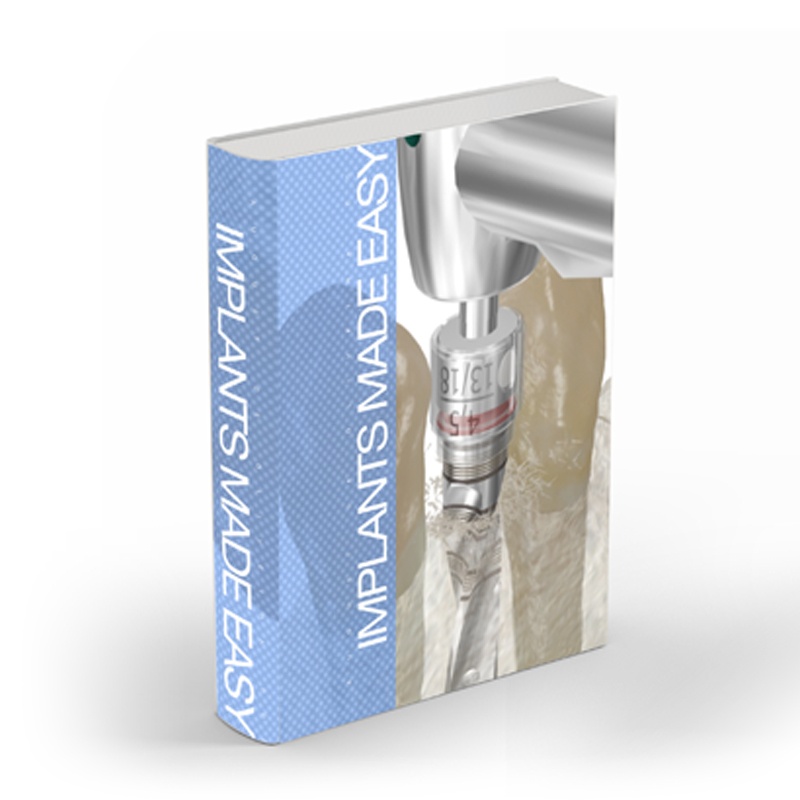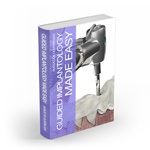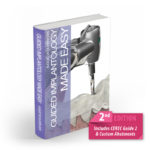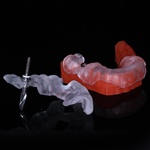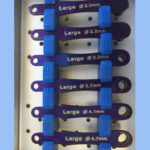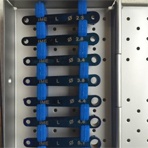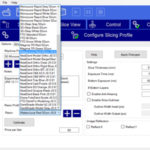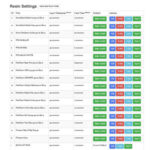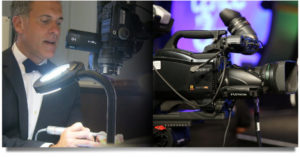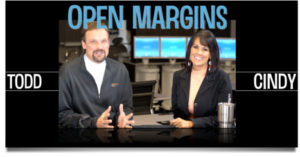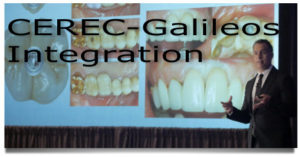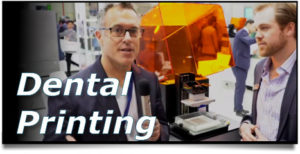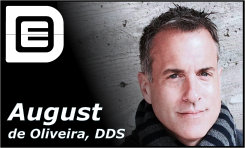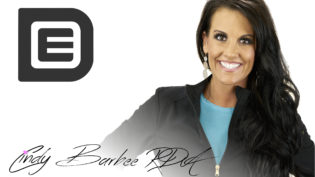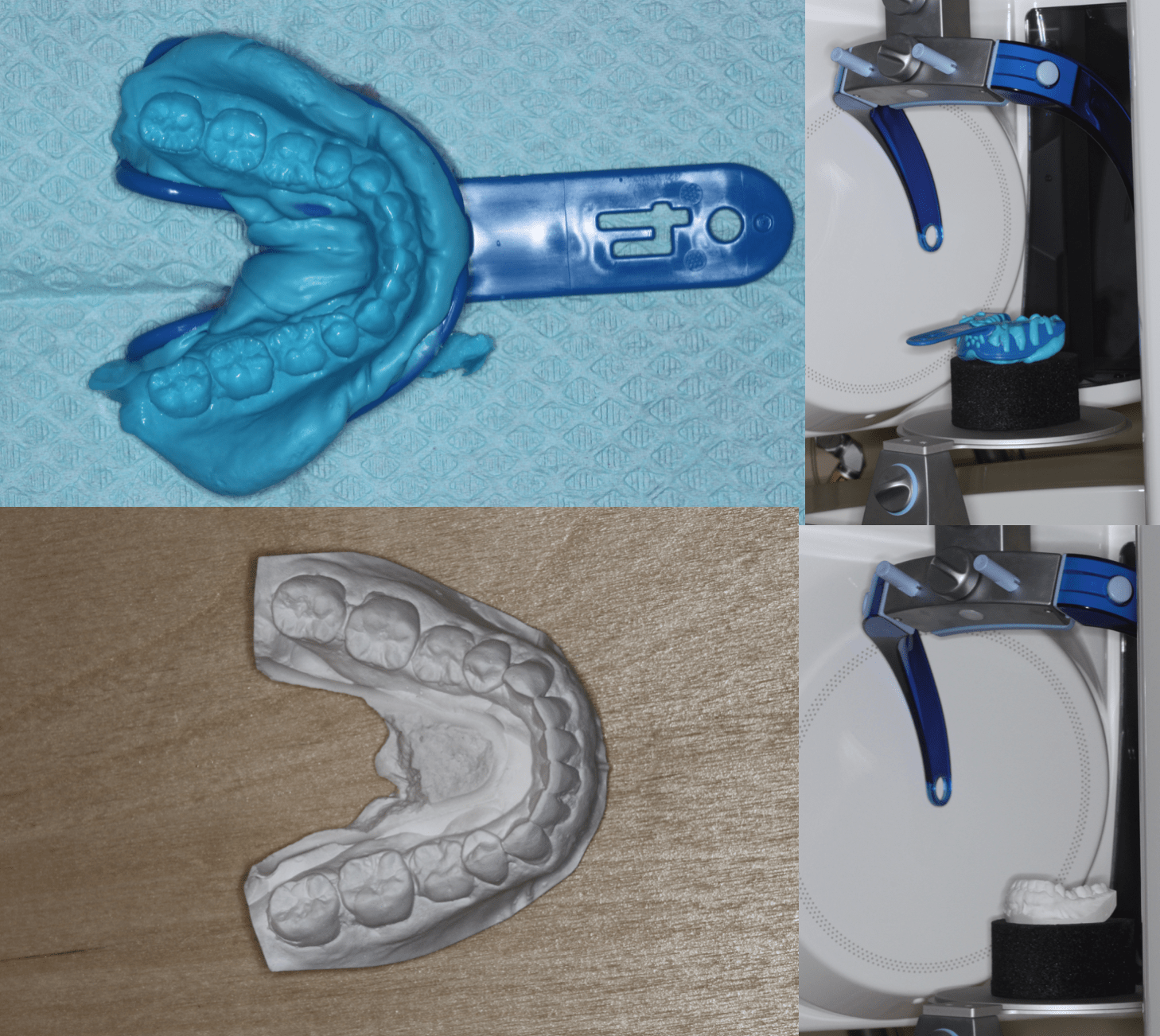
Ok, I’m back to the office and ready to play around with my Form 2! The last case I played around with a Cerec Guide 2 converted to STL in InLab, today I am playing with two free softwares that can generate STL models from the DICOM files in Galileos. Blue Sky Plan has a pretty slick interface that allows you to invert an impression and generate an STL for a fee ranging from 11 to 20 bucks a model, depending on how many you buy. Albeit not as sexy, you can also just scan a stone model in Galileos and export it to a free software, Osyrix that exports to STL for the low low price of free!! I did it both ways and am going to make a CG2 milled, try it on and also on the two models to test accuracy. Bust out that little shelf that came with your Galileos and turn it into a 3D scanner!
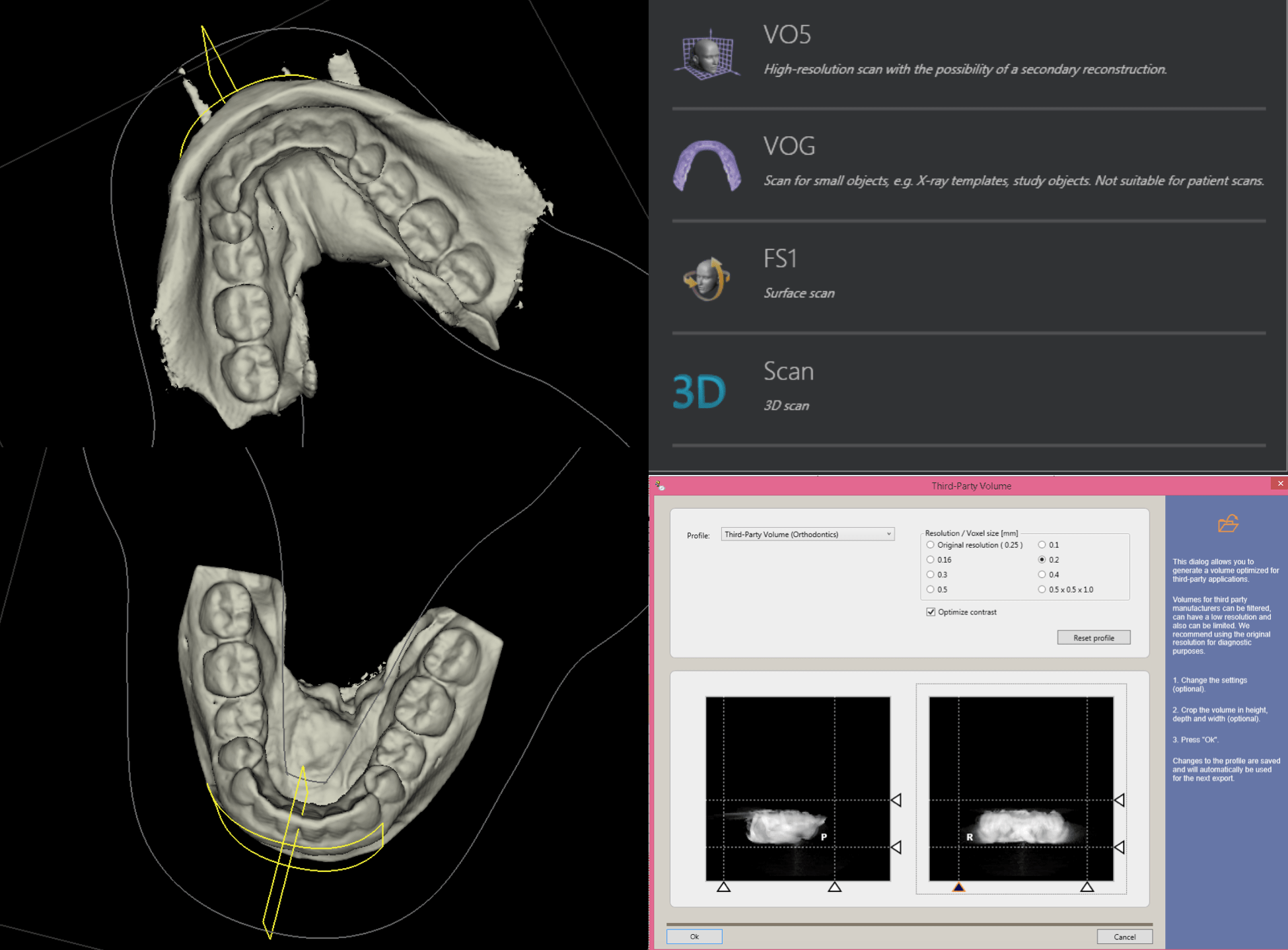
On the keypad select the VOG setting which is designed for models. I scanned both the impression as well as the model as two separate files. In Galileos to visualize right click the rendering and go to the SURFACE render and play a bit with the settings just to visualize. In Sidexis you can export for 3rd party processing. Use the sliders to just select the model as Osyrix wants you to buy the main version for a full model.
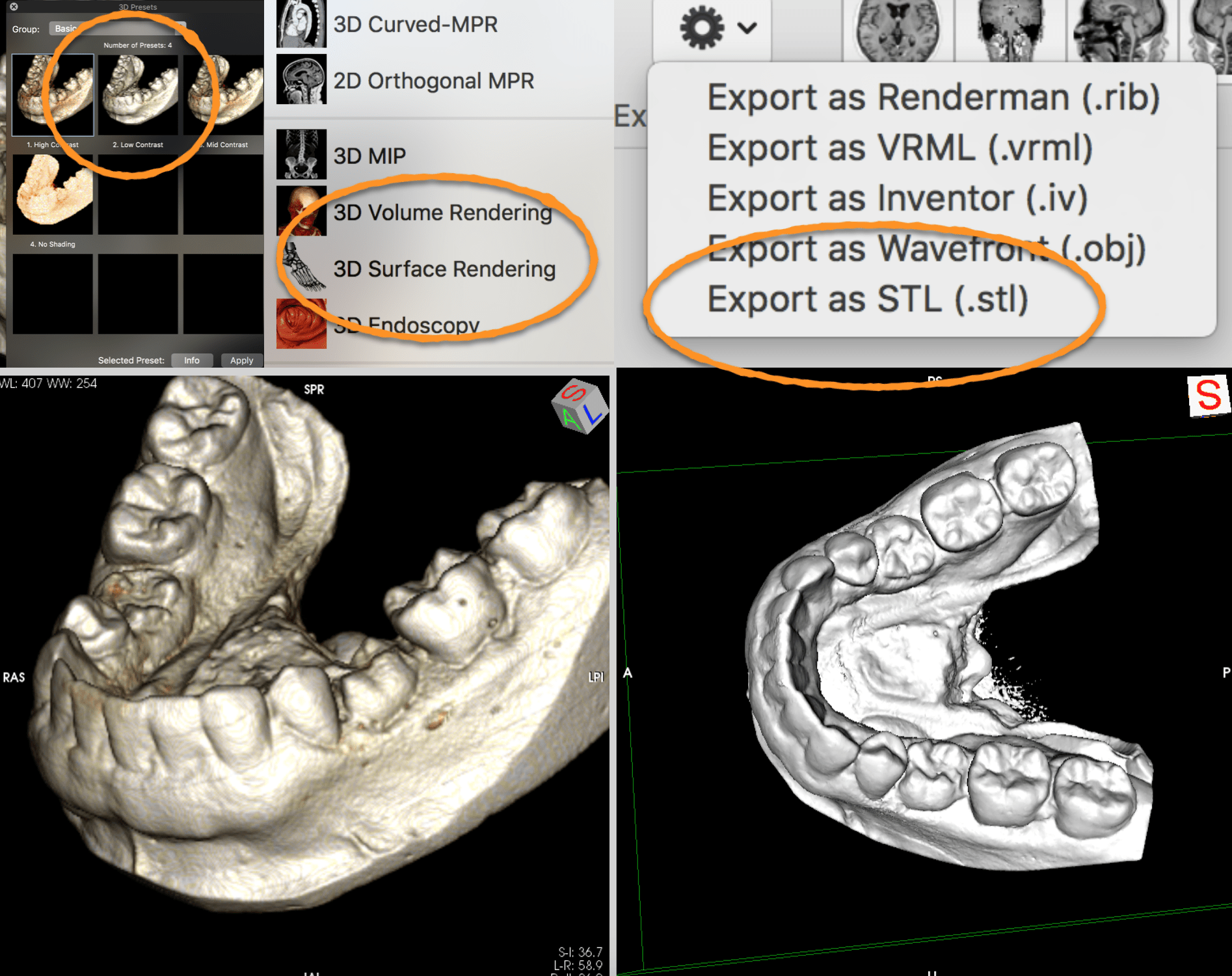
You can then take this model into Osyrix and export for FREE!!! select the rendering that best works with your scanner, You can select additional pre sets. Play with the contrast to take away the “fur” then in the 3D window select 3D SURFACE RENDERING. You get a 3D model and the option to export to STL.
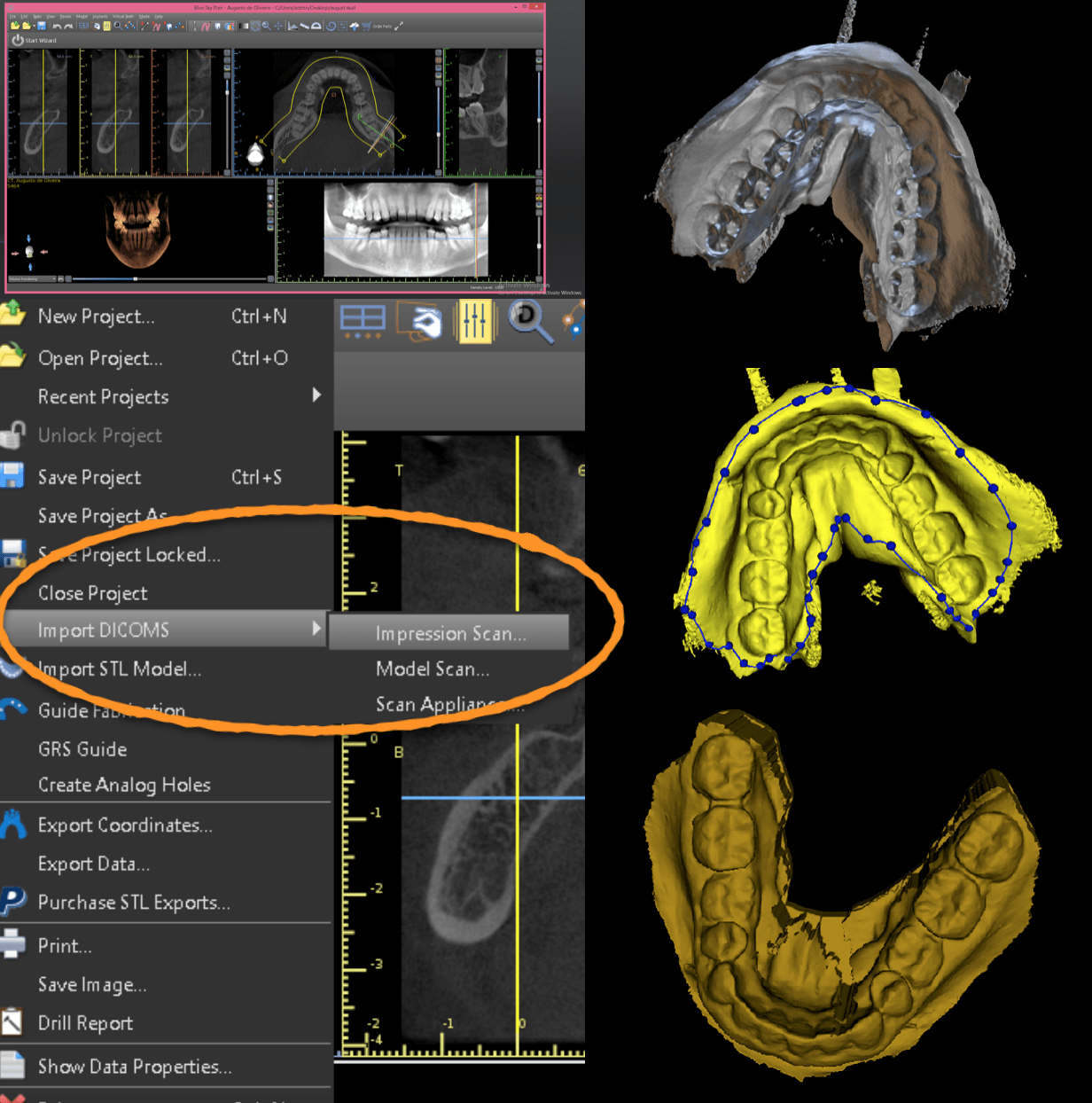
If you are a Blue Sky Plan user you can import the impression DICOMS and invert it into a model. Just select the extent of the base! This option requires you to pay via Blue Sky for the STL export. its 11 to 20 bucks depending on how many you buy. It would be cool to compare the quality of both models.
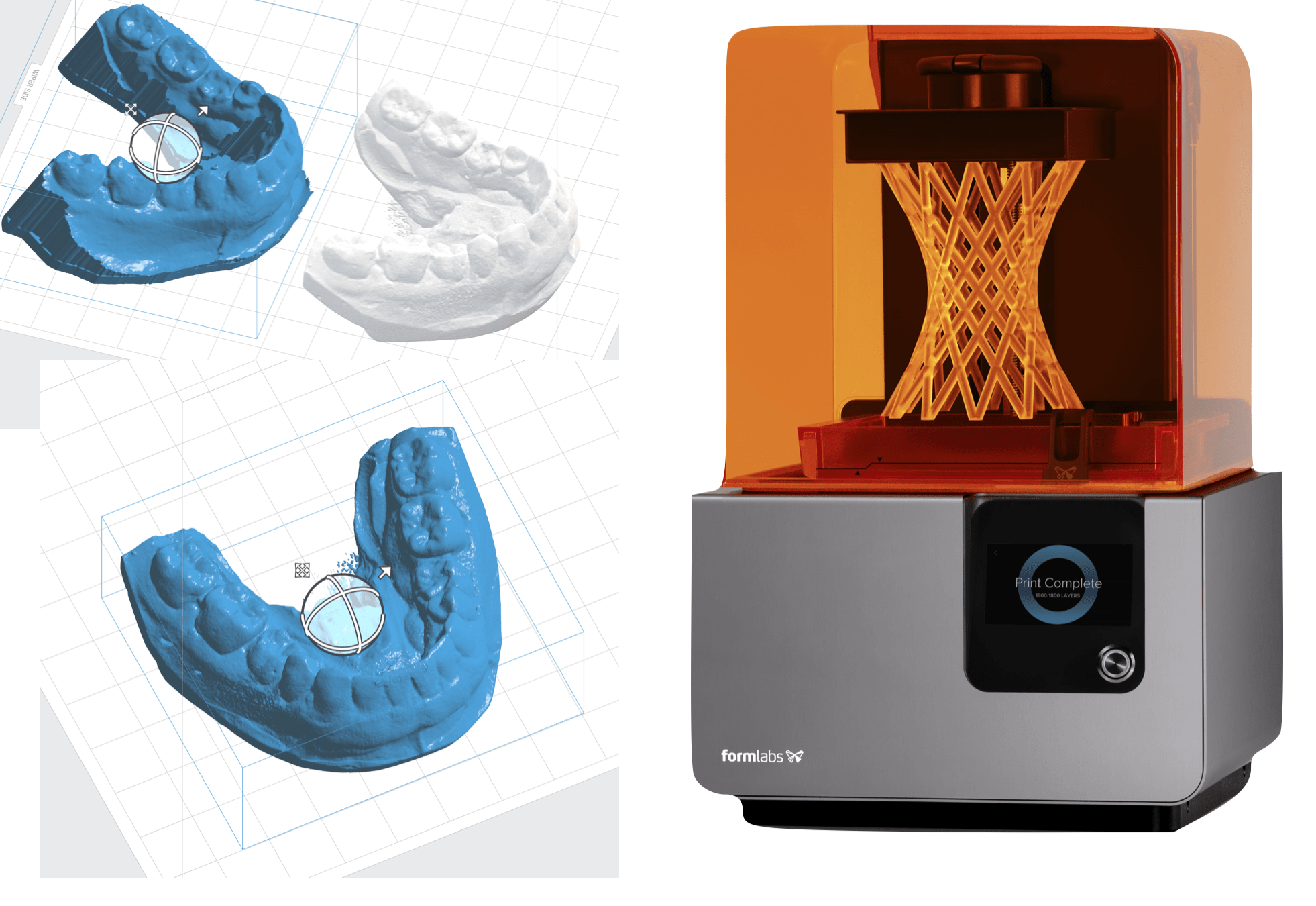
Off to the Form 2 printer. I tried to print without supports to see what happens. Will post the final tomorrow as well and compare the fit on me, the stone model scan, and the inverted impression. Why is this cool? Well we can make temps off of an analog model, or even buy a software for 2K to make sequential aligners (Orchestrate 3D!) Cool stuff will post after the stuff comes out.
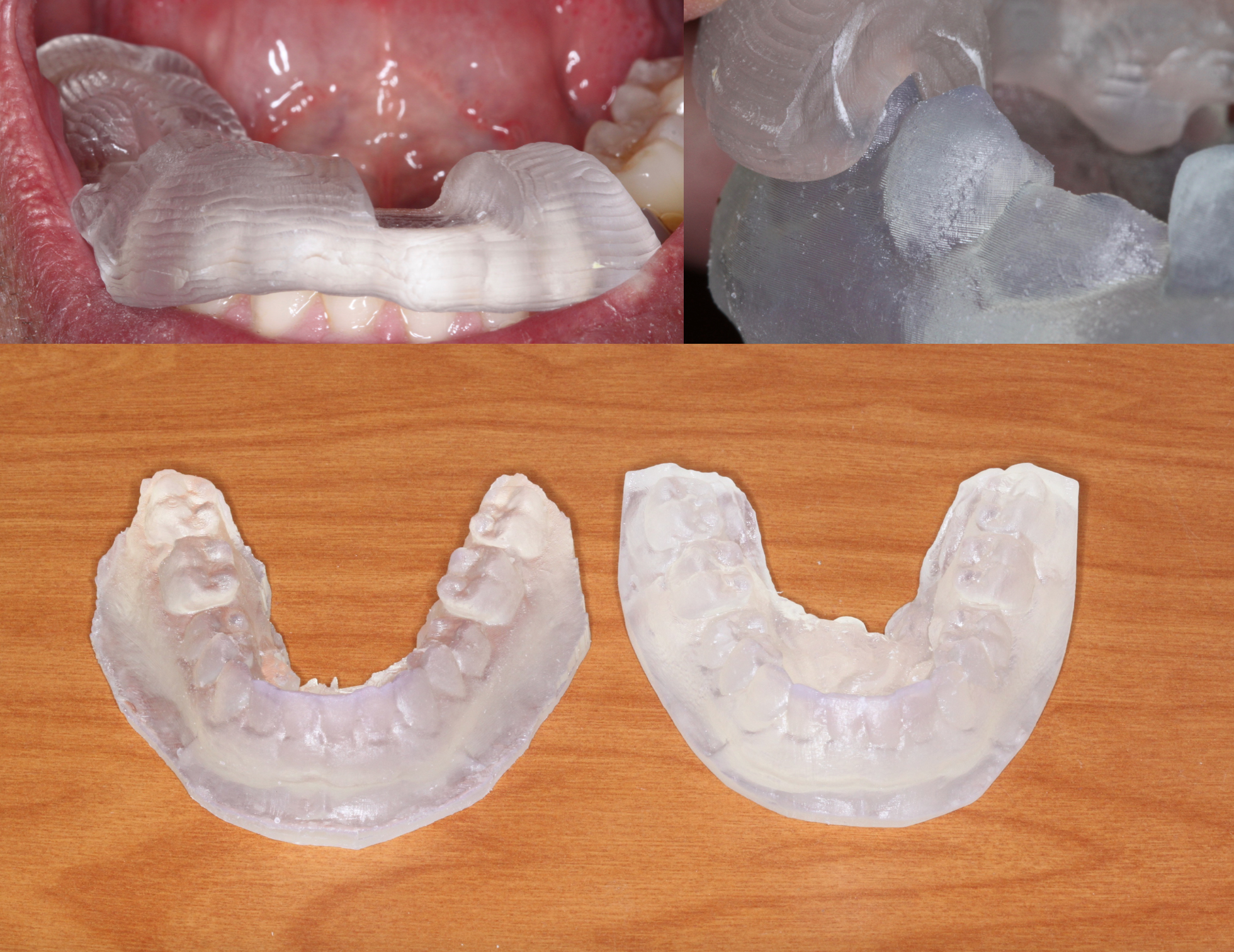
Ok the results are in! To test the accuracy of both, I took a CEREC Scan and made a CEREC Guide. Seated perfectly in my mouth with no rocking. Tested both models and BOTH were equally as accurate, no rocking . This is without using Hiroshi’s calibration block! Now I think I just got lucky. Will print his block and use it to test fit tomorrow. Will also play with Meshmixer using Baron’s Aligner video and test a few more models. Finally got my proper dental resins, so will re print using the gray material. So fun!
